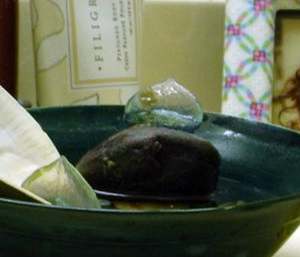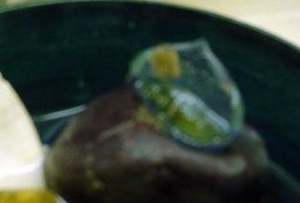What is it? From a school teacher in Los Angeles
May 2, 2002
From: Linda Slater


Hi...I'm an elementary school teacher and live in Playa del Rey, California. I walk my dog on the beach usually before sunrise...today I walked after sunrise and saw to my astonishment a beach filled with odd-looking little creatures. They were right near the water line and were about 2 to 4 inches long...no shell...with translucent fans on top of a dark grey/blue slug-like body. I am wondering if you have any idea what these things might be...I took some photos which I can share digitally. Please let me know what you think...thanks.
Linda Slater
lslater@attbi.com
Slater, L., 2002 (May 2) What is it? From a school teacher in Los Angeles. [Message in] Sea Slug Forum. Australian Museum, Sydney. Available from http://www.seaslugforum.net/find/6850Dear Linda,
Your animal is one of the wonderful group of animals that spend much of their life floating around on the surface of the ocean. Its common name 'By-the-wind-sailor' refers to the 'fan' or sail it has on top of its body. This sail is placed obliquely - just like the sail of a yacht, and there is continuing debate about whether those in the northern hemisphere have their sails angled differently from those in the southern hemisphere. Morris Abbott & Haderlie (1980) say that in California most animals are right-handed and so the prevailing northerly winds keep them off-shore. However if there are prolonged southerlies or westerlies they are driven on to the beaches.
Is it a slug? Unfortunately the name 'slug' is given to many soft bodied, apparently shapeless animals. True slugs are in fact molluscs, in fact snails that no longer have shells. This animal, whose scientific name is Velella velella is a cnidarian or coelenterate, a group of animals which includes sea anemones, jelly-fish and corals. Its often a good idea to put things you find washed up in a bucket if sea water. Often they have no skeleton so out of eater they just collapse and look shapeless and 'sluglike'. In water, Velella has a set of tenatcles which extend out below the sail and are used, like a sea anemone to catch the small prey it feeds on. You could describe Velella as an upside down sea anemone in which the trunk has become a flattened gas-filled float with a sail on top. It grows to about 8cm in length.
Although I normally only deal with true sea slugs, I have spent some time on this animal because it is part of a group of animals, including sea slugs, which live together, floating at the surface of the ocean. One other cnidarian is the Bluebottle or Portugese man-o-war, Physalia. Amongst the molluscs are the Violet Snails, Janthina and the aeolid nudibranchs Glaucus and Glaucilla. Both the snails and the slugs feed on Velella and Physalia.
If you click on the underlined names above you will find many photos and messages about this fascinating group of animals. The book I referred to above is a very useful guide to the invertebrate marine life of California. I am not sure if it is still available but I am sure many libraries would have copies.
• Morris, R.H., D.P. Abbott and E.C. Haderlie. 1980. Intertidal Invertebrates of California. Stanford University Press, Stanford, California. 690 pgs.
Best wishes,
Bill Rudman
Related messages
-
Physalia from Western Australia
From: Monika Stambergova, February 13, 2004 -
Velella velella
From: Glenn Nelson, May 10, 2002
